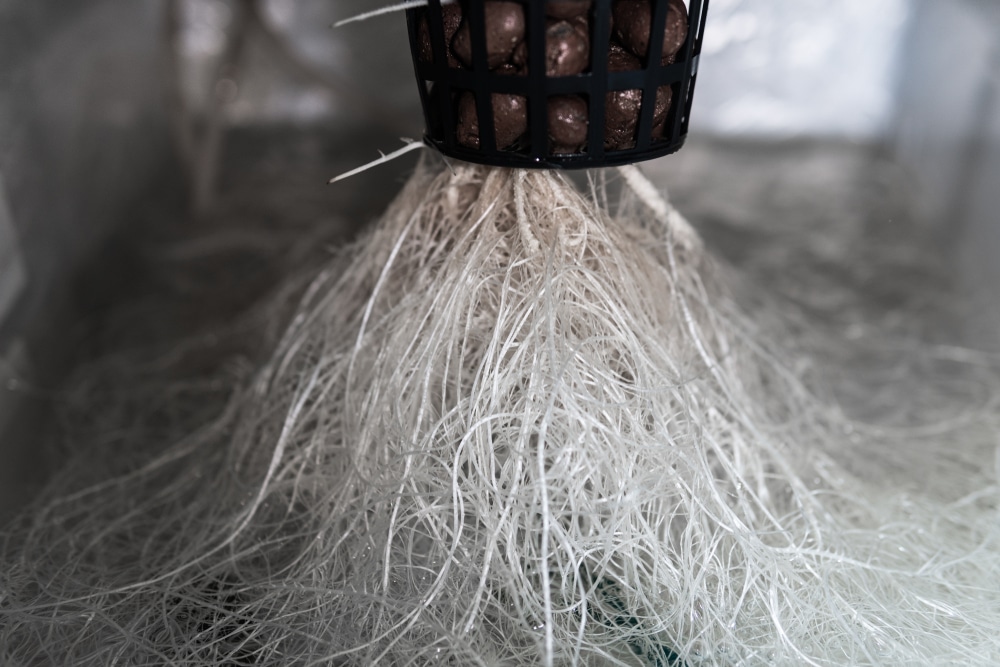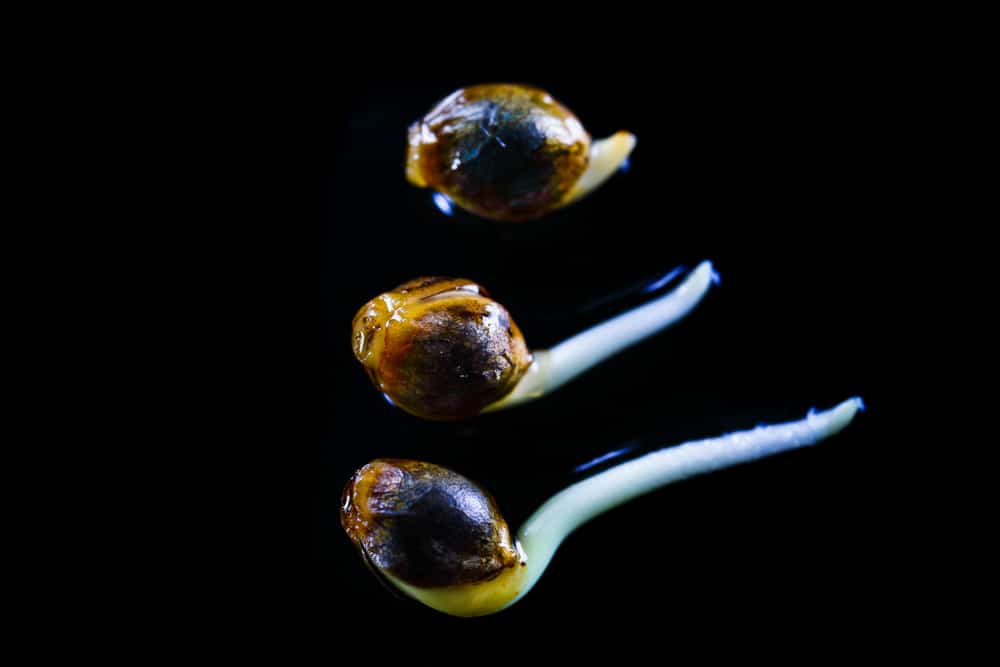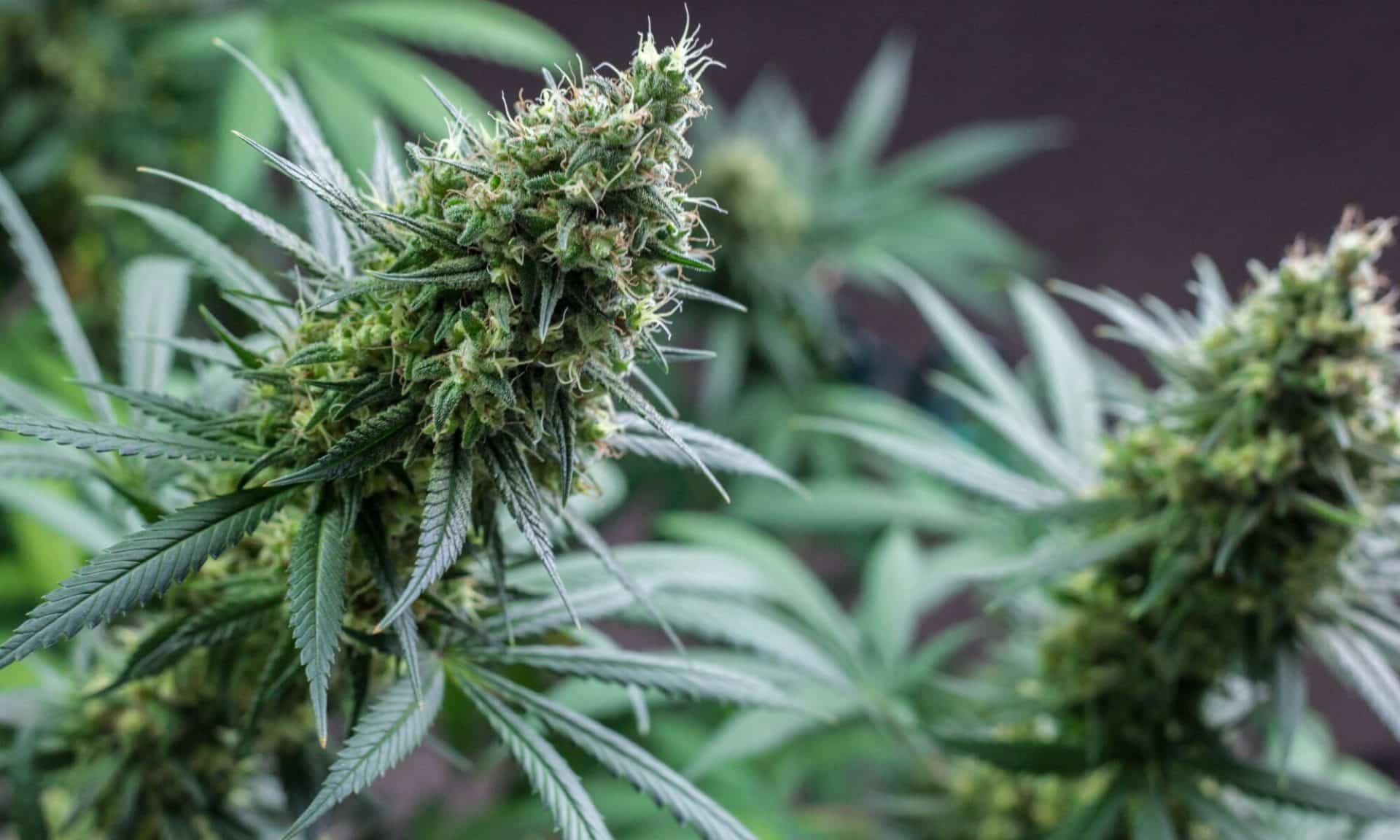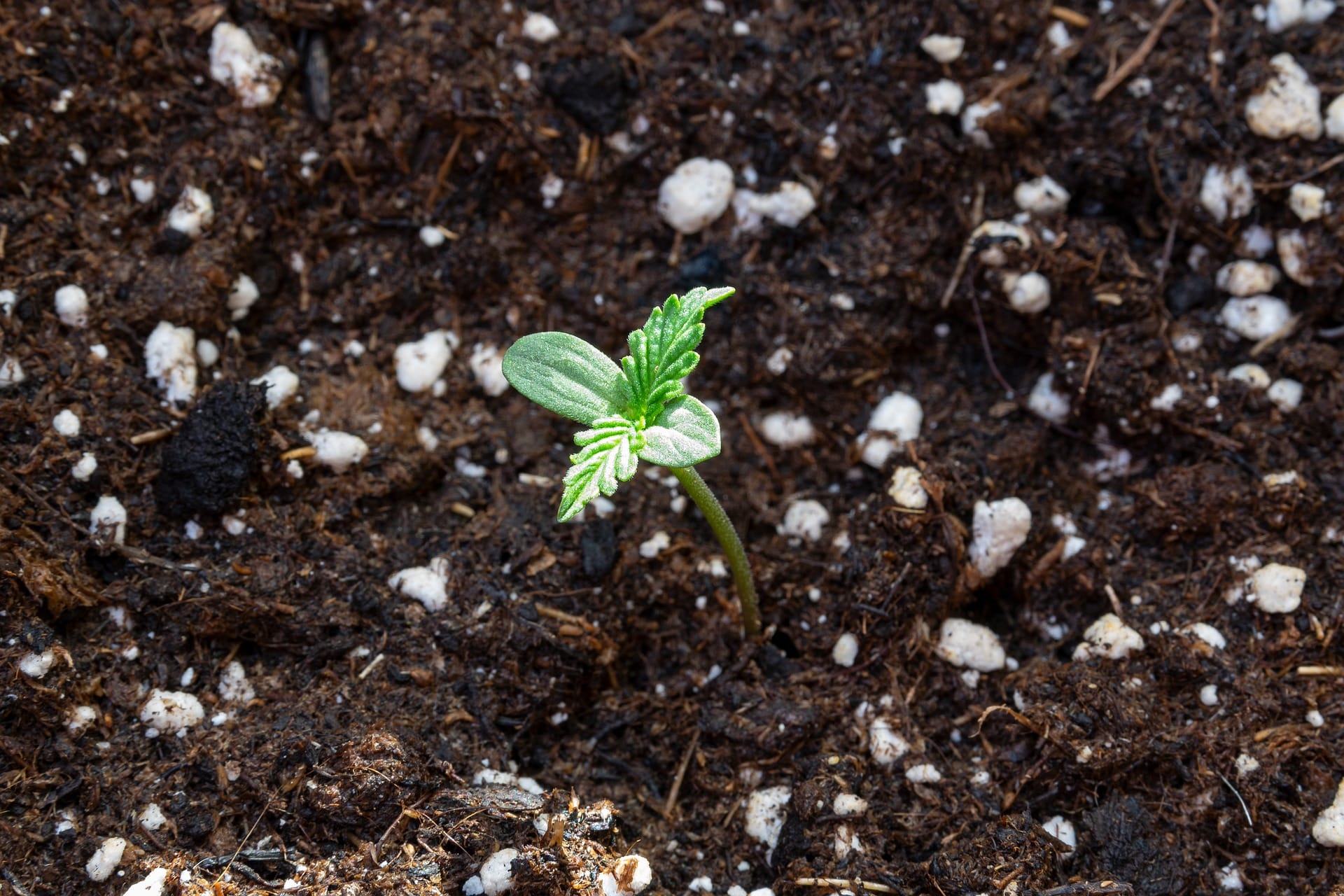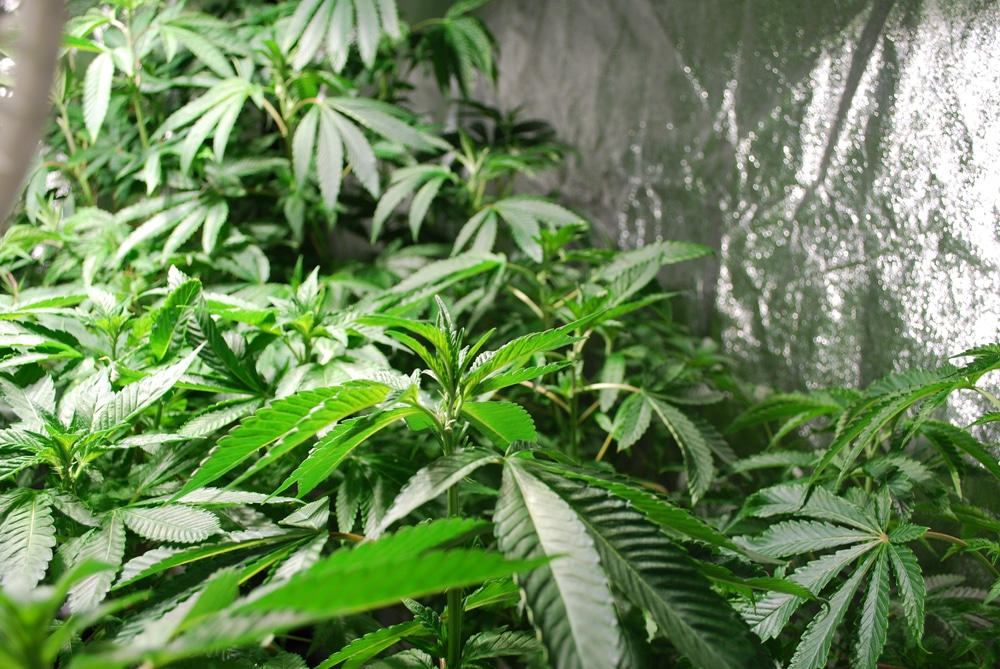No products in the cart.
Marijuana Education
Growing Hydroponic Weed at Home: A Hydroponics Cannabis Growing Guide
Are you interested in cannabis plant cultivation in a hydro setup? You’ve come to the right place.
When done correctly, growing hydroponically can improve nutrient intake and increase yields.
Join us as we explore growing with hydroponics. We’ll also share some vital tips to help you grow like a pro.
What’s a hydroponic system?
Growing weed without soil my sound unheard of, but that’s where the wonderful world of hydroponics comes in. This soilless cultivation system uses water as its primary medium.
The plants sit in an ebb and flow system containing a soluble nutrient solution. This growing method comes in all shapes, sizes, and complexity levels.
Benefits of a hydroponic cannabis growing
Why should you consider this type of grow setup? The benefits of hydroponic growing are abundant, we’ve listed a few below.
- The amount of nutrients provided to the plant is significantly great, as a result, they tend to grow faster.
- When compared to growing in soil, the plants often produce large yields since they grow bigger.
- The growing environment in a hydro setup is less susceptible to illness and infestations.
- This way of growing is an effecient use of space, whether outdoors, in a small room, or grow tent.
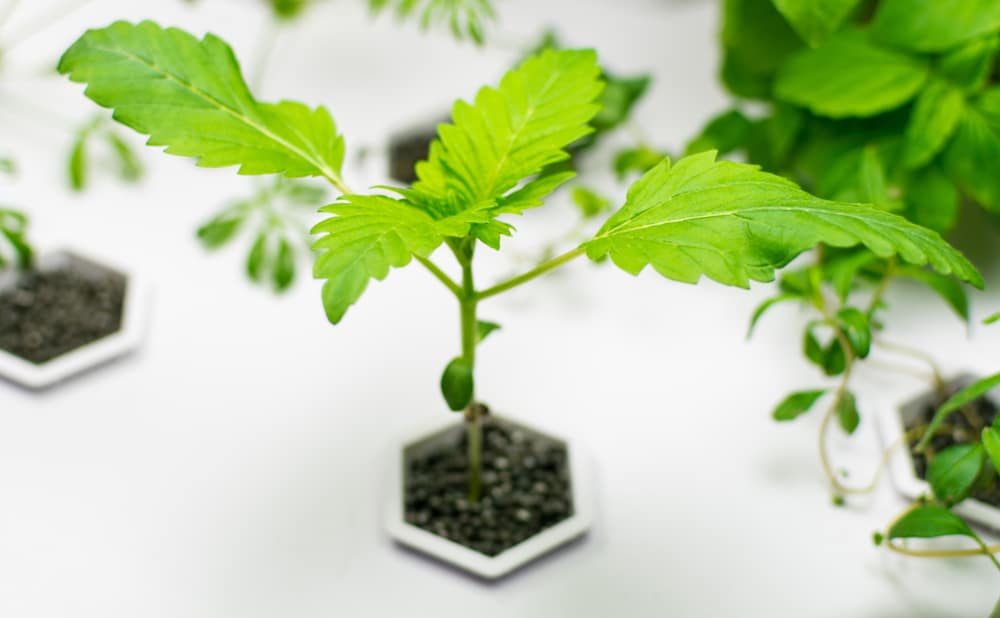
Legal considerations
If you want to start growing your chosen cannabis strains, you must consider the law in your state. If there are no laws against the hydroponic method or traditional method of growing, it’s often recommended to keep it concealed.
Weed laws state-by-state change often as new bills are passed. Check your government’s website for the updated rules and restrictions relevant to your area.
Understanding the basics of a hydroponic growing
growing without the use of soil is becoming all the rage. Let’s see how it works, starting with its origins.
Brief history of hydroponics
While it may sound new, water-based cultivation is an ancient practice. Records show the Gardens of Babylon used hydroponics in the sixth century BC. The Aztecs in Central America also used it for crop production.
The practice persisted as scientist John Woodward employed this method for his plants in 1699. People referred to this system as aquaculture, chemiculture, or nutriculture. Then William Gericke came about in 1924, coining the term “hydroponics.”
We’ve since developed numerous systems for easier cultivation, even for producing veggies in space.
How hydroponics works
Much like other growing methods, using hydroponic systems requires some planning. Growing with hydroponic techniques involves having the roots of the plant submerged in nutrients and water. There are different types of hydroponic systems, but we’ll discuss the most straighforward approach.
Basic hydroponics system
A bare-bones hydroponic system consists of these elements:
- Water reservoir or tank: As with nutrients found in soil, this resevior provides a constant nutritional supply.
- Grow tray: The spot for keeping plants, containing pots and (sometimes) inert growing medium.
- Wicks or pumps: Ways to move the nutrients to the plant roots.
Nutrient solution
The solution is a mix of nutrients and water that feeds the plants. It supplies the weed grown in water with soluble minerals and oxygen. Add it according to the manufacturer’s dose and frequency instructions.
Most growers use specifically formulated cannabis fertilizers in hydroponics. You can also rely on soluble NPK mixes and add micronutrients as needed for the life stage.
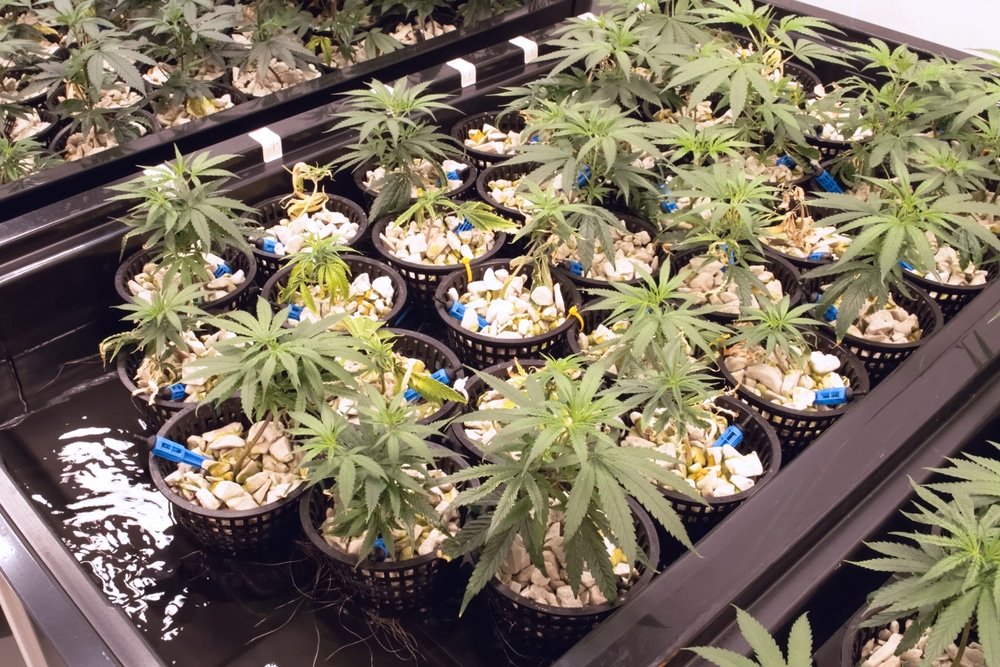
Hydro weed vs soil cultivation
Are you an experienced soil-based cultivator learning how to grow hydroponic cannabis? You’ll notice the following differences between the two setups:
- Feeding accuracy: Hydro growers must be extra precise with their fertilizer.
- Beginning of feeding: In hydro, you must feed your plants as soon as greenery emerges.
- Suitable pH levels: The optimal pH is 6.0–7.0 in soil but 5.5–6.5 in hydro.
- Transplanting frequency: Hydro weed remains in the same container from seedling to harvest.
- Difficulty: Soil is more beginner-friendly and less effort-intensive than hydroponics.
Setting up your hydroponic grow system
Ready to give hydroponics a go? Let’s see how this setup looks in practice.
Choosing the right location
Growing in a hydroponic system is all about control. You meet the plants’ precise preferences, and they respond with abundant harvests. To make that easier, pick the appropriate spot for your setup.
Space requirements
Hydroponics takes up less space than soil. It requires 1–2 square feet of space per plant. There should be enough headroom for the strain at its tallest. If raising several crops, leave at least six inches between each canopy.
Environmental control
Hydro-grown weed performs best in well-monitored environments. Pick an insulated space with electrical outlets for climate control devices. Install a heater, cooler, (de)humidifier, intake and exhaust fans, thermometer, and hygrometer.
Necessary equipment for hydroponic growing
Next, let’s see what equipment is necessary for cultivating cannabis.
Hydroponic systems
You can choose from several hydroponic systems. Here are two easy and efficient options for first-timers:
- The Kratky method: Each plant sits above a water bucket, and roots are submerged in a nutrient solution. There’s an air gap above the surface of the liquid to supply oxygen.
- The wick system: Plants sit in containers above a reservoir with the nutrient solution. Wicks connect the two, transporting water and fertilizer to the roots.
Most hydroponic setups also need a growing medium within the containers. Opt for coco coir, clay pebbles, or Rockwool.
Lights and reflective materials
Light fuels plant growth and dictates its life cycle. You can supply it with LED or HID grow lamps hung above the canopies.
Reflective materials bounce light rays around the grow room to provide full coverage. Line your room or tent with mylar for the best results.
Air circulation and filtration systems
Proper ventilation supports plant health and shelters your crop from pests and pathogens. Equip the room with exhaust fans and carbon filters to remove contaminants from the air. Intake fans bring fresh air in, while circulation fans keep it moving.
Temperature and humidity control systems
Learning how to grow your cannabis plants isn’t only about water. The environment must be suitable for plants to keep them healthy. Automated thermometers and hygrometers make this task easier.
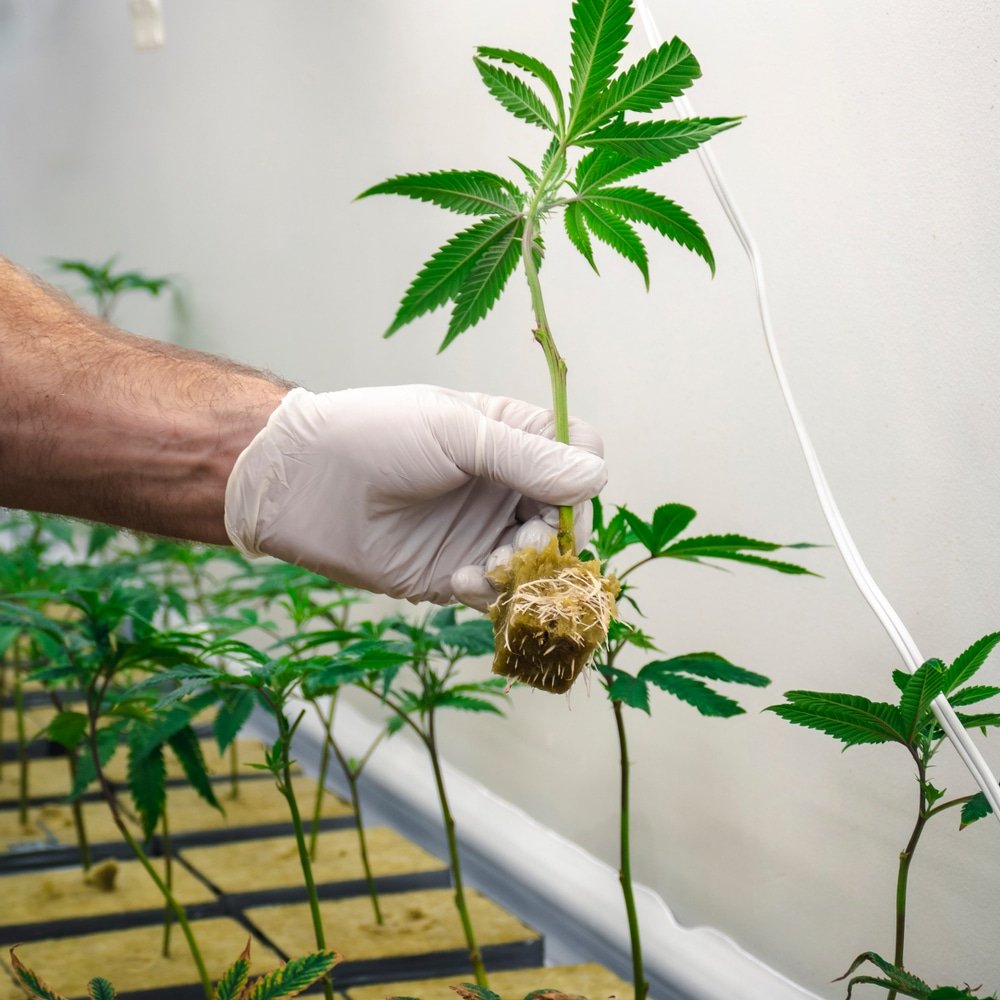
Choosing the right strain
The best strains for new hydro growers are compact and resilient to nutrient issues. Think autoflowers and indica-dominant varieties.
Opt for beginner-friendly cannabis strains during your first few grows. Hydroponic growers agree that it takes time, trial, and error. So, it pays to have a garden that’s not too vulnerable to stress and fluctuations.
Beginner’s guide to growing
With the purchases out of the way, you can grow marijuana from seed to harvest.
Preparing your hydroponics system
After choosing your system, it’s time to get ready to grow cannabis.
Cleaning and sterilizing equipment
Water tanks are damp and dark, making them a breeding ground for pathogens. Before running your system, sterilize all equipment to reduce the contamination risk. Wipe down the trays, buckets, and containers with rubbing alcohol and rinse with water.
Setting up the system
If using the Kratky method, fill one bucket per plant with a water-nutrient solution. Drill a hole in the cover for the container. Then fit medium-filled pots onto the lid, and you’re good to go.
You need two separate spaces for the wick setup. Suspend a plant tray above a water-nutrient reservoir. Connect them with a cotton or nylon wick.
Germinating the marijuana seeds
As with growing in soil, germination is the first step of cultivation. The same applies for this method of growing cannabis. This process entails exposing seeds to warmth and moisture to activate their hormones. It marks the beginning of the plant life cycle.
Once the seeds have healthy white taproots, transplant them into a medium to let seedlings develop.
Transplanting seedlings to the hydroponic system
Transplanting seedlings happens when they develop their first sets of serrated leaves. Fill the larger container with the substrate you used before. Loosen the medium and move seedlings into the new environment.
Maintaining your hydroponic marijuana plant
The vegetative stage happens next, and plants bloom when you flip the lights. Here’s how to obtain optimal growing conditions in vegging and flowering.
Monitoring nutrient solution
Hydroponic nutrients consist of mineral salts dissolved in water. You can monitor them by measuring the electrical conductivity (EC) within the solution. Higher EC means a higher fertilizer concentration, so feed your weed when it drops.
Regular pH checks and adjustments
Different minerals are soluble at different acidity levels. Measure the pH with each feeding to ensure it’s within range (5.5–6.5). You can use a digital pH meter, drops, or strips.
Adjust the acidity level with pH-Up and pH-Down solutions if it exits the ideal range.
Maintaining ideal temperature and humidity
Indoor cannabis temperature and humidity mimic its preferred outdoor environment. Excessive heat, cold, drought, or moisture lead to diseases. Use automated climate meters to keep the environment suitable.
Pruning and training your plants
Growing involves managing lush, dense foliage. Prune and train for better airflow and light penetration.
Remove the large fan leaves that shade the lower branches twice in vegging and once in flowering. You can also use low-stress training (LST) to flatten the canopy.
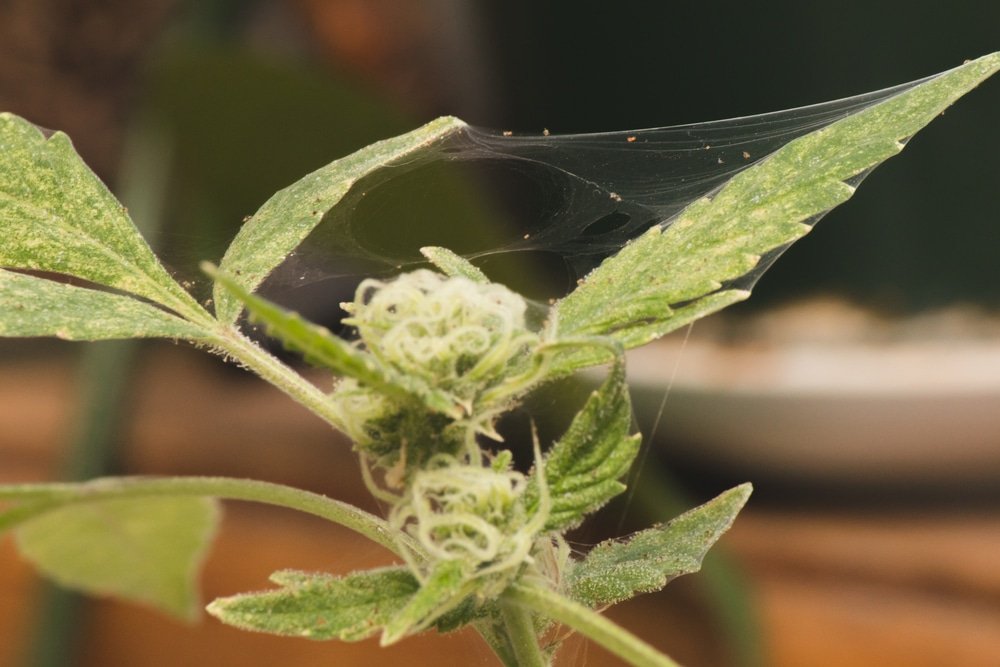
Detecting and dealing with pests and diseases
Pests and diseases are less likely in this setup, but they do occur. Routinely inspect the canopy with a magnifying glass to catch and address them early.
Deal with pests and diseases by removing the affected foliage to prevent spreading. Then treat the rest with organic pesticides or fungicides, like neem oil or soap.
Harvesting and curing your weed
Congratulations, your plants have yielded sticky buds. Now’s the time to collect and prepare them for consumption.
Knowing when to harvest
Nailing the harvest timing means getting the buds at their most potent and flavorful. The flowering time is the same either medium, so the usual rules apply here.
Harvest when the pistils curl and the trichomes are 70% milky white and 30% amber. These signs should emerge at the end of your strain’s expected flowering period.
The harvesting process
Harvesting doesn’t differ between hydro weed vs soil. You can opt for wet or dry trimming, removing the leaves and branches before or after drying.
In the first case, remove each bud from its branch and eliminate the sugar leaves. In the second, cut down the entire plant to dry it before trimming.
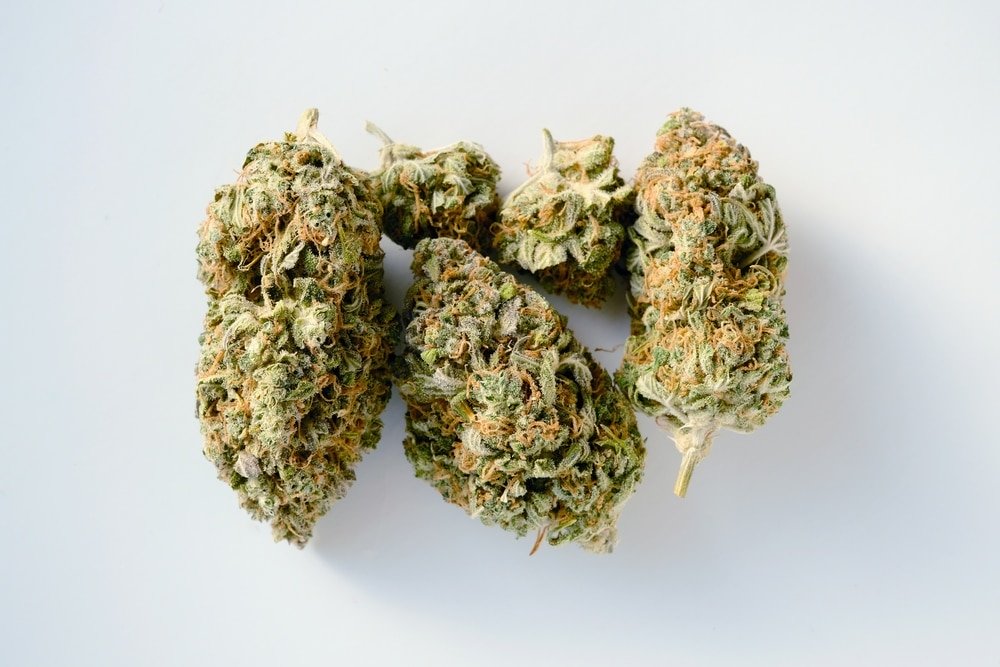
Drying and curing your buds for maximum potency
Drying and curing are post-harvest processes for better-quality buds.
Dry your weed for a week before or after trimming. Leave it in a cool, dark room with low humidity until it releases excess water. Next, place buds in a mason jar for curing. This process ensures they’re as smooth-tasting as possible and should last at least a month.
Common pros and cons of growing
Learning about this way to grow cannabis introduces unique challenges to your gardening adventure. Here’s which obstacles you may encounter and how to overcome them.
Nutrient deficiencies and toxicities
Nutrient troubles are your number one concern in hydroponics. Deficiencies happen when there’s not enough food; toxicities when there’s too much.
Deficiencies cause discolored and sickly plants. Toxicities result in burned leaf tips and twisted growth.
Check the pH first in either case. Correct it if needed, empty the tank, wipe it, and establish the correct weed feeding schedule.
Pests and diseases
Pests and diseases harm the plant’s leaves, roots, and buds. Oft-encountered issues include whiteflies, aphids, spider mites, and root rot.
Regularly the foliage and roots for trouble signs. Keep your system clean and your conditions optimal to reduce their occurrence. Use natural pesticides and fungicides to fix them without harming plants with chemicals.
Equipment failures
When it comes to growing in water, it’s essential to keep the system in shape. These equipment failures may occur:
- Leaking: Happens due to loose vents or roots clogging the nutrient tray, so stay vigilant.
- Broken pumps: Get a model with built-in alarms so you can react promptly.
- Clogged air stones: Clean them with bleach if you notice them losing efficiency.
pH fluctuations
pH fluctuations lock out nutrients and cause deficiencies. They can happen because your water or fertilizer is too acidic or alkaline.
Some fluctuations are acceptable, but the pH should remain in the 5.5–6.5 range. Measure it every time you fill the reservoir and correct it with pH-Up or pH-Down if needed.
Read more about the Best pH Level for Marijuana
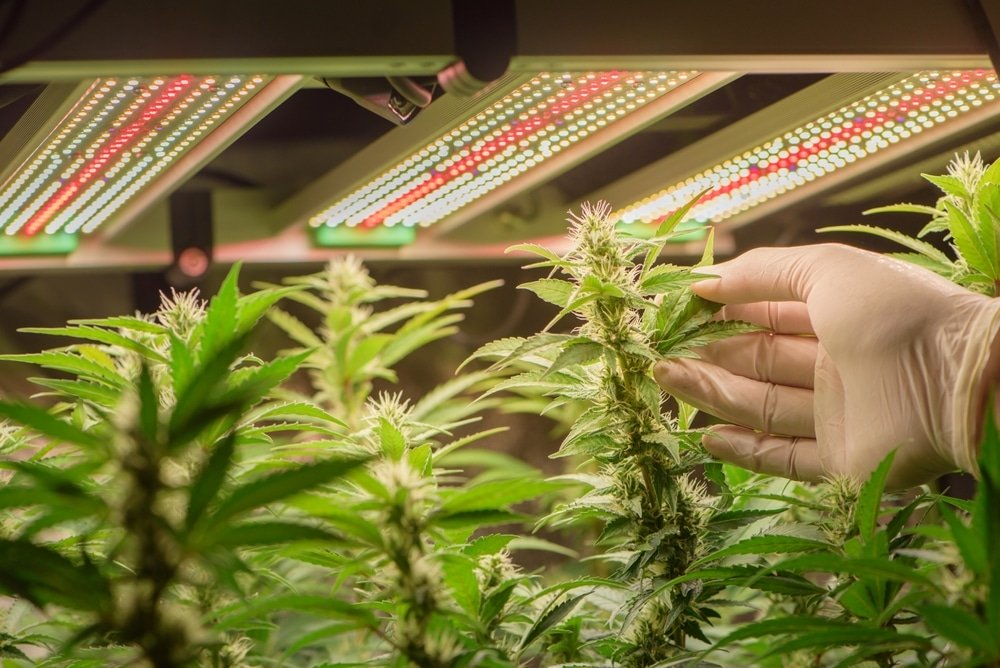
Advanced techniques for your hydroponic garden
Growing cannabis with this system can be as simple or complex as you want. Master the basics, then explore these techniques for faster-growing plants and larger yields.
Types of hydroponic systems
Beyond the Kratky and wick setups, there are advanced hydroponic systems for you to explore. They employ electronic devices and use less water.
Deep water culture (DWC)
Deep water culture (DWC) systems have plants sitting above a reservoir with roots submerged in water. Air stones within the tank aerate the liquid and let the plant breathe.
Nutrient film technique (NFT)
Nutrient film technique (NFT) has the tray at a slight angle above the reservoir. The tank contains air stones and a pump for circulating the nutrient solution. This system sends a constant stream of water and nutrients to the roots, and the excess flows back down.
Ebb and flow
Ebb and flow system (aka flood and drain) consists of pots above a growing tray with a water inlet and outlet. The waterways connect to an external tank with nutrients, air stones, and a pump. Water periodically floods the tray and then drains back to the reservoir.
CO2 enrichment for enhanced growth
Carbon dioxide makes plants grow faster. It’s twice as effective in plant-boosting hydroponics.
Hang CO2 bags above the plants to encourage photosynthesis and plant growth. Increase the feeding frequency and light intensity to support development.
Training techniques for maximum yield
Training techniques have you manipulating plant growth for higher yields. We divide them into high-stress and low-stress.
- High-stress training (HST) means damaging the plant to make it produce multiple colas. Options include topping, fimming, and manifolding.
- Low-stress training (LST) means tying branches to coax plants into a desired shape.
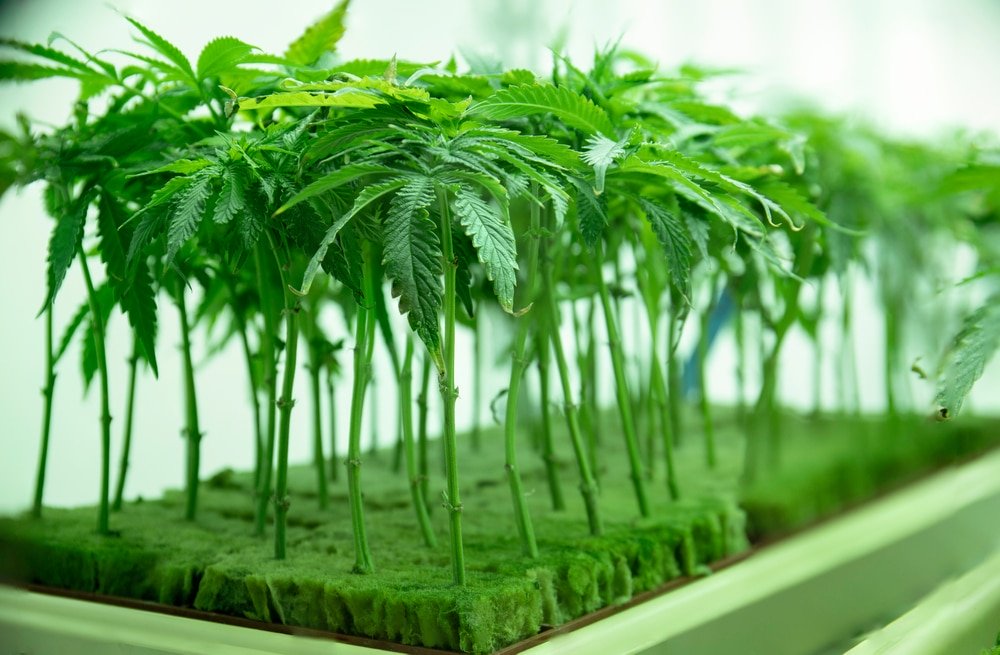
Conclusion
Let’s wrap things up with some key takeaways.
Recap of key points
Remember these factors in hydroponic cultivation
- It pays to go water-based. This soilless system offers rapid growth rates and higher yields than traditional methods.
- Regular monitoring is essential. Fluctuations are more frequent without soil, so keep a close eye on your system.
- It’s all about nutrients. Plant nutrition is 100% your responsibility. Master nutrient ratios and concentrations to keep your garden thriving.
- Optimize all conditions. Besides the system, you need a well-functioning grow room for optimal output.
Future perspectives
Hydro is the growing setup of the future. It has lower resource requirements and higher output than soil, making it a common-sense option. It’s exploding on the global market; large and small cultivators are hopping on the bandwagon.
Encouragement for new hydroponic marijuana growers
Hydroponics may overwhelm an outside observer with its parts, systems, and methods. But anybody can master it: the key is to start simple and build up over time. The effort will pay off in lush plants and abundant harvests.
Visit our store to buy weed seeds and give hydro a go.


